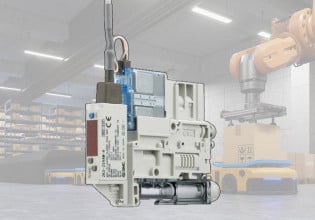R
I'm trying to control the speed of an air compressor motor to maintain a 10 bar outlet pressure. I've never done anything like this before (I've just graduated as an electrical engineer). The outlet of the compressor is connected to a buffer vessel, which is then connected to an air separation system. The variable speed motor drive has a reference speed signal of 4-20 mA.
I am measuring pressure at the compressor outlet (a 4-20 mA signal). When the buffer outlet is closed, the outlet pressure builds up as a straight line with time (motor running direct on line).
The load flow rate varies continuously and unpredictably. I thought I could use two cascaded controllers. The first one would take pressure as a setpoint and the second would take the derivative of pressure (assuming this is proportional to flowrate?). Would this work (I only know the absolute basics of fluid dynamics eg. Bernoulli's equation)?
Thanks and regards,
Roy Gibson.
I am measuring pressure at the compressor outlet (a 4-20 mA signal). When the buffer outlet is closed, the outlet pressure builds up as a straight line with time (motor running direct on line).
The load flow rate varies continuously and unpredictably. I thought I could use two cascaded controllers. The first one would take pressure as a setpoint and the second would take the derivative of pressure (assuming this is proportional to flowrate?). Would this work (I only know the absolute basics of fluid dynamics eg. Bernoulli's equation)?
Thanks and regards,
Roy Gibson.






